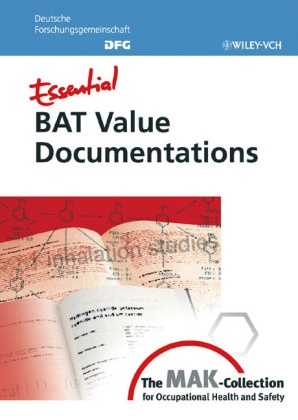Read more
For more than 20 of the most important occupational toxicants, the documentations for the established BAT values (Biological Exposure Values)and EKA values (Exposure Equivalents for Carcinogenic Substances) are provided. These include an authoritative review of the available toxicological studies and data. For every substance, metabolism and pharmacokinetics, critical toxicity, exposure and effects, suitable indicators of internal exposure, the evaluation of the BAT value and the correct interpretation of data are described. Basic physico-chemical data are provided as well. The documentations are thus not only essential for the application of BAT and EKA values but provide a concise overview of biological monitoring for each substance.The documentations are authoritative, because they were compiled by the Commission for the Investigation of Health Hazards of Chemical Compounds in the Work Area. The Commission is internationally acknowledged for its neutrality and is working strictly according to transparent, scientific criteria. BAT Values set the standards for legal regulations in many countries of the world, e. g. they are the basis for at least 30 % of the threshold limits valid in the European Union.
List of contents
GENERAL ASPECTS
Concept of BAT-values
Concept of BLW-values
Concept of EKA
SUBSTANCES
Acetone
Alkali chromates
Aniline
Arsenic and inorganic arsenic compounds
Arsenic trioxide
Benzene
Butanone (2-Butanone)
Cobalt
Cresol (ortho)
Cyclohexane
Diaminodiphenyl methane
Dimethyl sulfate
Ethylene glycol monobutyl ether
Ethylene oxide
Hydrogen fluoride
Lead and its inorganic compounds (inhalable fraction) except lead arsenate and lead chromate
Methanol
Nickel and nickel compounds
Propanol (2-Propanol)
Styrene
Tetrachloro ethylene
Vinyl chloride
Xylene (all isomers)
About the author
Helmut Greim is Head of the DFG-Senate Commission for the Investigation of Health Hazards of Chemical Compounds in the Work Area and also President of the Advisory Committee on Existing Chemicals of Environmental Relevance of the German Chemical Society. Both bodies are intimately involved in European regulatory procedures concerning hazardous chemicals.

